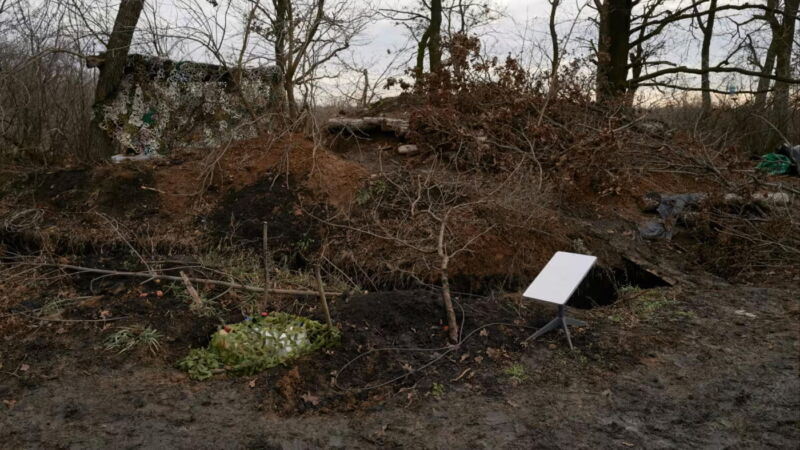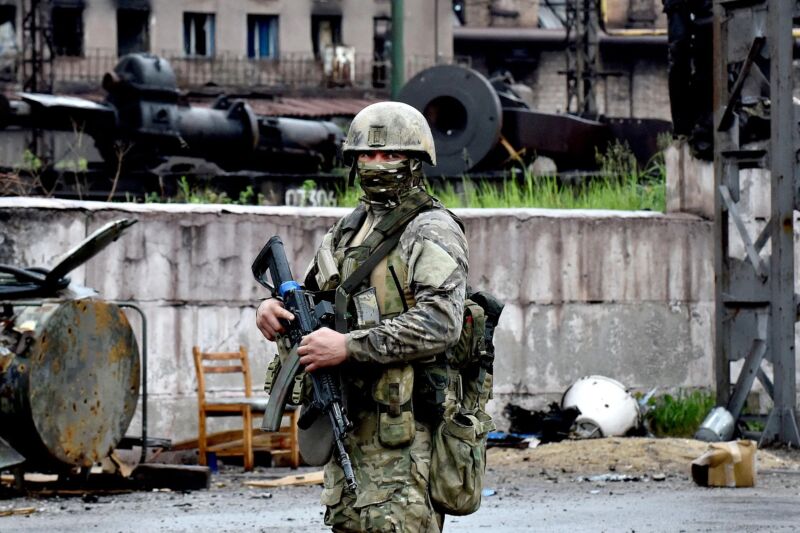Russian forces now using Musk’s Starlink on Ukraine front line

Russian forces are using Starlink terminals on the front line in Ukraine, according to the Ukrainian military, which said the adoption of Elon Musk’s satellite internet service by Moscow’s troops was becoming “systemic”.
Ukraine’s GUR military intelligence unit said on Telegram on Sunday that radio intercepts confirmed the use of Starlink terminals by Russian units operating in the occupied Donetsk region of eastern Ukraine.
“Yes, there have been recorded cases of the Russian occupiers using these devices,” Andriy Yusov, a GUR officer, told RBC-Ukraine. “This is starting to take on a systemic nature.”
GUR made its claim following multiple reports in recent days that Russian forces are using Starlink devices, including a sighting reported by news outlet Defense One of the company’s distinctive square-shaped receivers close to Russian positions.
One Russian volunteer group flaunted on social media the devices it said it had purchased for Russian forces.
SpaceX, which owns Starlink, has denied reports it has sold equipment to the Russian government or military. In a post on X on Sunday Musk, the company’s chief executive, said: “A number of false news reports claim that SpaceX is selling Starlink terminals to Russia. This is categorically false. To the best of our knowledge, no Starlinks have been sold directly or indirectly to Russia.
Dmitry Peskov, spokesperson for President Vladimir Putin, told reporters on Monday that Starlink “is not certified [in Russia], therefore it cannot and is not officially supplied here. It cannot be used in any way,” according to Russian newswire Interfax.
“We should probably not wade into the discussion between the Kyiv regime and the businessman Musk,” Peskov said.
Musk provided thousands of Starlink terminals to Ukraine to help it fend off Russian troops soon after their full-scale invasion in February 2022, giving Kyiv’s forces a valuable technological advantage in the form of high-speed internet for communications, targeting and battlefield management software. However, Kyiv’s praise for the businessman turned to fury when Musk started to limit the operation of Starlink in areas of Ukraine that Russian forces have occupied since 2014, including Crimea.
That was because Ukraine wanted its forces to be able to use the system for operations in Russian-controlled areas of their territory, though Kyiv is now complaining because Russians, as well as Ukrainians, are using it in contested areas. But introducing or reintroducing so-called “geofencing” to stop Starlink use by Russia on the front line could also affect the Ukrainian military’s devices given the proximity of the two sides’ positions.
The apparent use of the technology by Russian forces to help their invasion is another example of Moscow’s forces adapting their tactics in response to Ukraine’s innovations as they have done with the mass use of cheap, commercially available racing drones.
Ukrainian media reported that Russian forces may have obtained the terminals via intermediaries in Dubai.
In response, SpaceX said on X: “Starlink also does not operate in Dubai. Starlink cannot be purchased in Dubai nor does SpaceX ship there.”
“Additionally, Starlink has not authorized any third-party intermediaries, resellers or distributors of any kind to sell Starlink in Dubai. If SpaceX obtains knowledge that a Starlink terminal is being used by a sanctioned or unauthorized party, we investigate the claim and take actions to deactivate the terminal if confirmed.”
A biography of Musk by Walter Isaacson published last autumn detailed how the tycoon refused to allow Starlink to be used by Ukrainian forces for a naval drone strike on Russian ships in Sevastopol. Musk said he feared this could trigger a nuclear response from Moscow.
© 2024 The Financial Times Ltd. All rights reserved. Not to be redistributed, copied, or modified in any way.
https://arstechnica.com/?p=2002644






